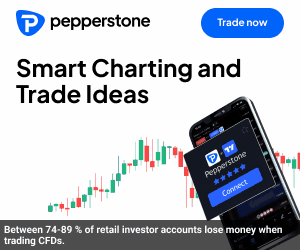Advantages of Trading Stocks Using CFDs
Google, the epitome of technological innovation, has transformed the digital landscape with its cutting-edge solutions and groundbreaking advancements. For aspiring investors, trading Google stocks through Contracts for Difference (CFDs) presents a remarkable avenue to participate in the success of this tech giant. In this article, we delve into the history of Google, its ascent to prominence, and the potential benefits and considerations of buying and trading its stocks using CFDs.
The Evolution of Google: From Startup to Global Domination
In 1998, Larry Page and Sergey Brin revolutionized internet search by establishing Google. Since then, the company has diversified its offerings and expanded into various industries, ranging from cloud computing to artificial intelligence. Google’s initial public offering (IPO) took place in 2004, catapulting the company into the ranks of the world’s most influential corporations and igniting widespread interest in its stocks.
Pros of Buying and Trading Google Stocks:
- Embrace Technological Excellence: Buying Google stocks allows investors to partake in the success of a visionary company renowned for innovation, cutting-edge technologies, and continuous growth.
- Capitalize on Market Volatility: Trading Google stocks using CFDs provides flexibility to profit from both rising and falling prices, making it an attractive choice for traders seeking opportunities in any market condition.
- Leverage and Amplify Your Investments: CFDs enable traders to leverage their capital, allowing for greater exposure to Google stocks and the potential to amplify profits.
- Diversify Your Portfolio: By including Google stocks in your investment portfolio, you benefit from diversification, spreading risk across multiple assets and sectors.
- Access Advanced Trading Tools and Analysis: CFD trading platforms offer an array of powerful tools, including real-time data, technical indicators, and comprehensive charting capabilities, empowering traders to make well-informed decisions.
Cons of Buying and Trading Google Stocks:
- Market Volatility and Risk Management: The value of Google stocks can be subject to market volatility, and traders must implement effective risk management strategies to safeguard their investments.
- Platform Selection and Regulatory Factors: Choosing a reputable CFD trading platform, such as Skilling (backlink), and staying abreast of relevant regulations are essential factors to ensure a secure and reliable trading experience.
Conclusion: Trading Google Stocks with CFDs
Trading Google stocks through CFDs presents an enticing opportunity for investors to participate in the success story of one of the world’s most influential companies. With its history of innovation and continuous growth, Google stocks provide a compelling investment choice. By considering the pros and cons, harnessing the advantages of CFD trading, and making informed decisions, traders can unlock the potential for success in the dynamic world of Google stock trading.
For more information, check out the Google webpage and the Skilling review
Example of a profitable leveraged CFD trade with Google stocks:
Let’s consider a scenario where an investor believes that Google’s stock price will rise in the near future. The investor decides to buy a leveraged CFD on Google stocks. They choose a leverage ratio of 1:10, meaning that for every $1 they invest, they have exposure to $10 worth of Google stocks.
Suppose the current price of Google stocks is $1,000. The investor purchases 10 CFD contracts, equivalent to a total exposure of $10,000. If the price of Google stocks increases by 5% to $1,050, the investor’s position would gain $500 ($10,000 x 5%). Considering the leverage, the investor’s actual profit would be $5,000 ($500 x 10).
Example of a profitable leveraged CFD trade when short selling Google stock:
Now, let’s explore a scenario where an investor believes that Google’s stock price is overvalued and will decline. The investor decides to short sell Google stocks through a leveraged CFD trade.
Assuming the current price of Google stocks is $1,200, the investor sells 10 CFD contracts, equivalent to a total exposure of $12,000. If the price of Google stocks decreases by 10% to $1,080, the investor’s position would gain $1,200 ($12,000 x 10%). Accounting for the leverage, the investor’s actual profit would be $12,000 ($1,200 x 10).
FAQs related to using CFDs for trading Google stock:
- What is a CFD? A CFD (Contract for Difference) is a financial derivative that allows traders to speculate on the price movements of an underlying asset, such as Google stocks, without owning the actual asset. It enables traders to profit from both rising and falling prices.
- How does leverage work in CFD trading? Leverage allows traders to gain exposure to a larger position than their initial investment. For example, with a leverage ratio of 1:10, an investor can control $10 worth of Google stocks for every $1 invested. While leverage amplifies potential profits, it also magnifies potential losses.
- What are the advantages of using CFDs to trade Google stock? CFD trading offers several advantages, including the ability to trade on margin, access to a wide range of markets, the flexibility to profit from both rising and falling prices, and the availability of advanced trading tools and features




